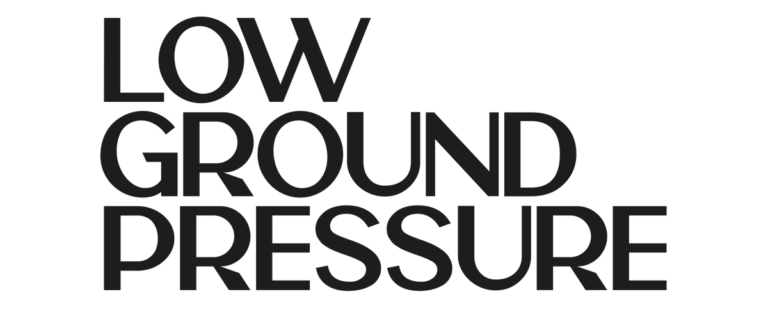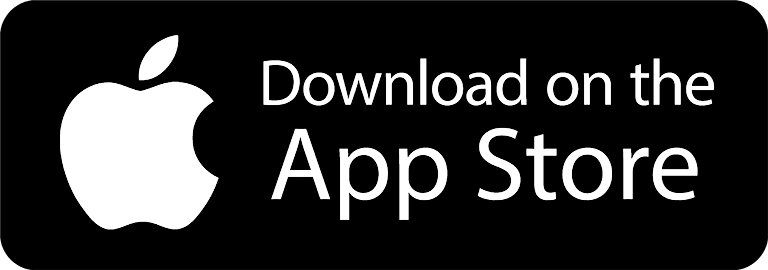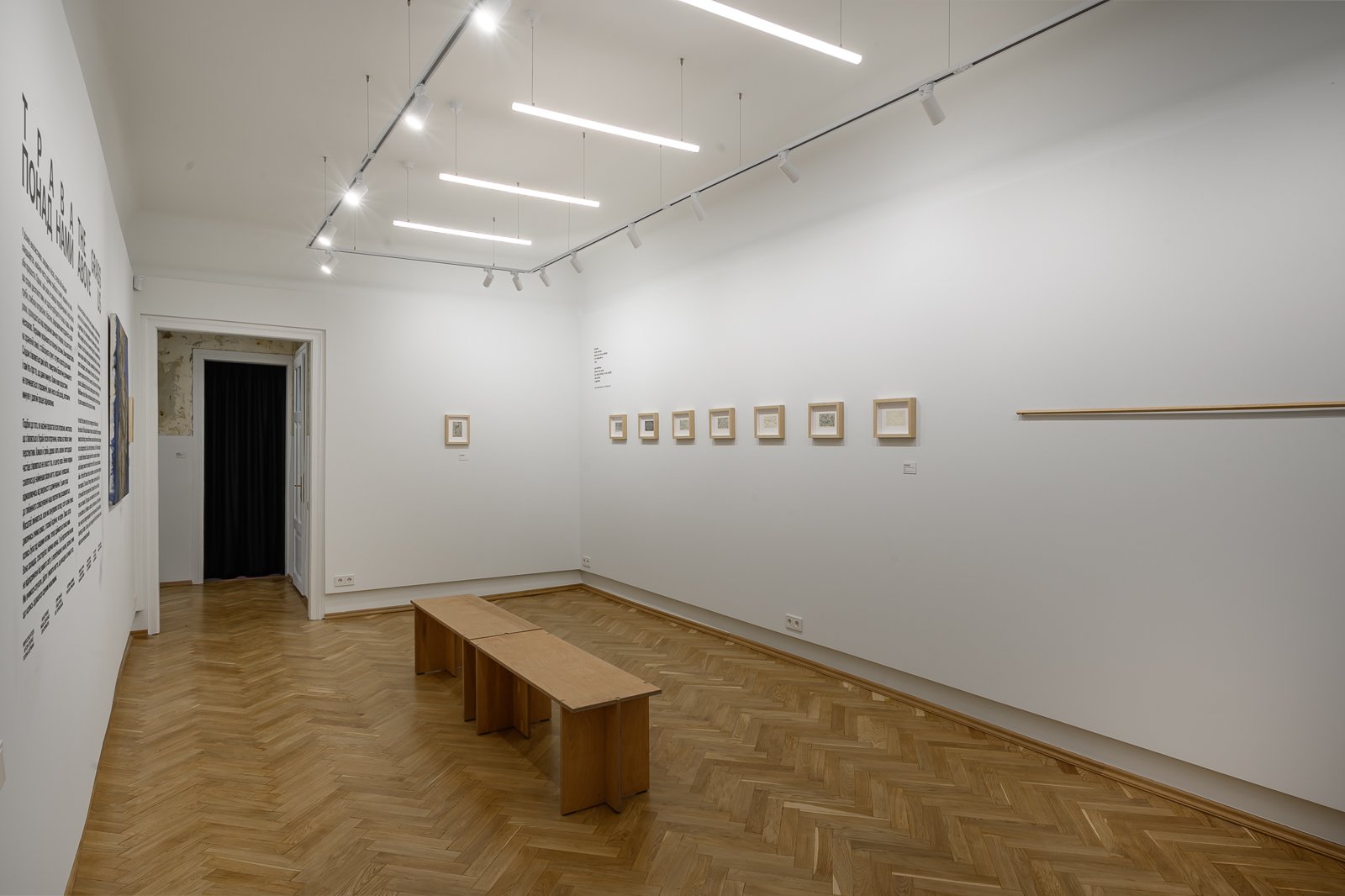
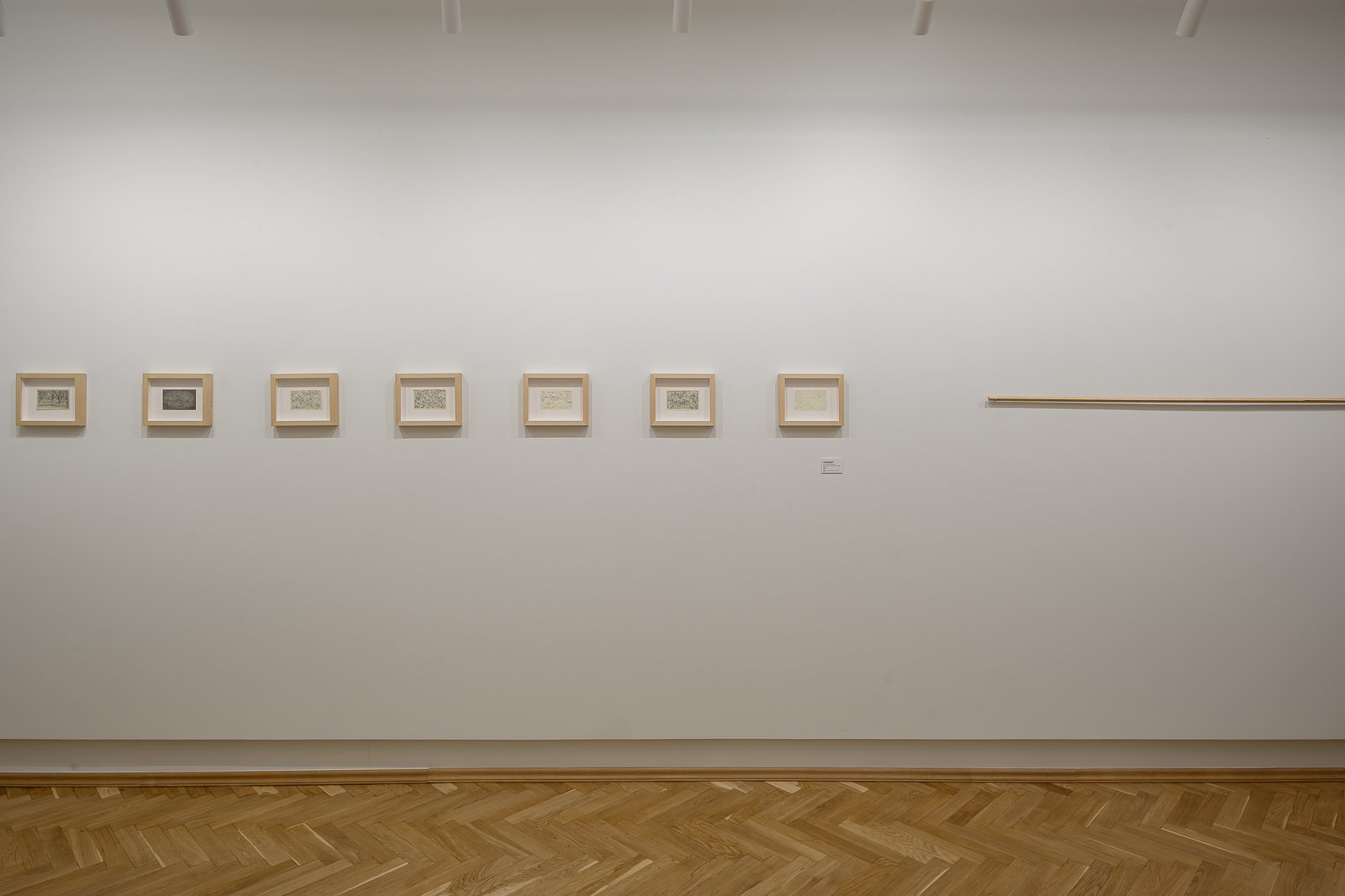
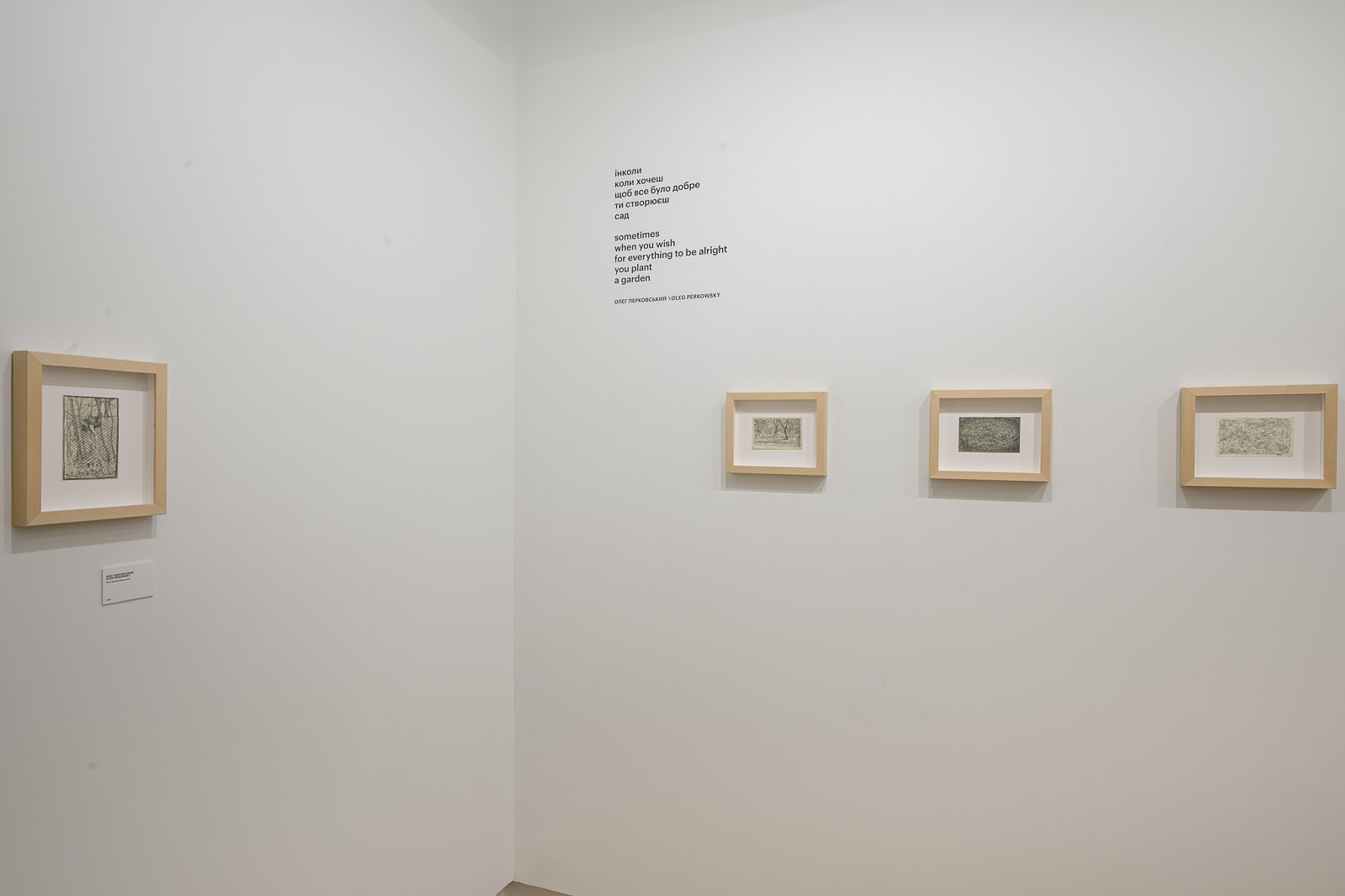
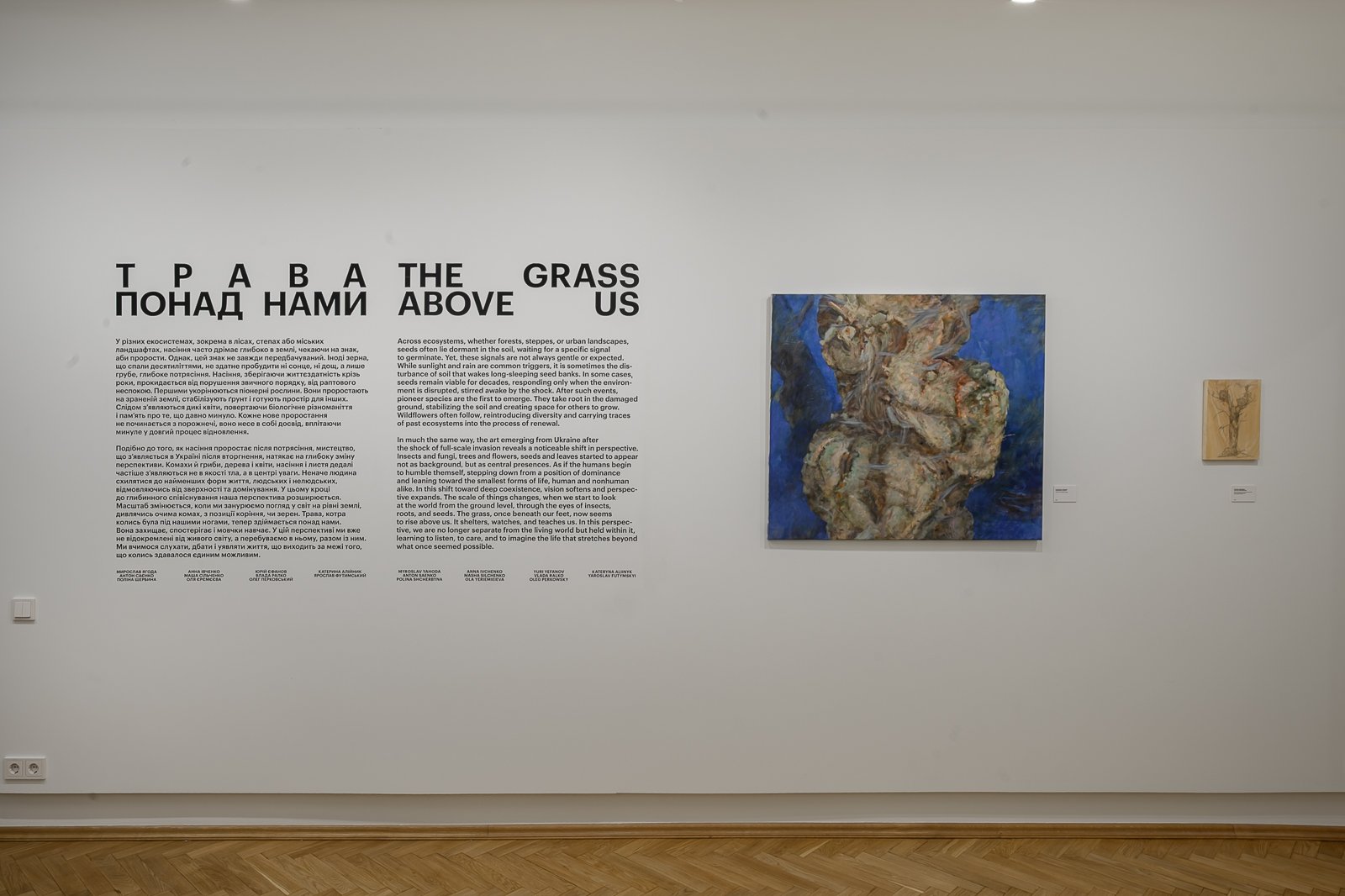
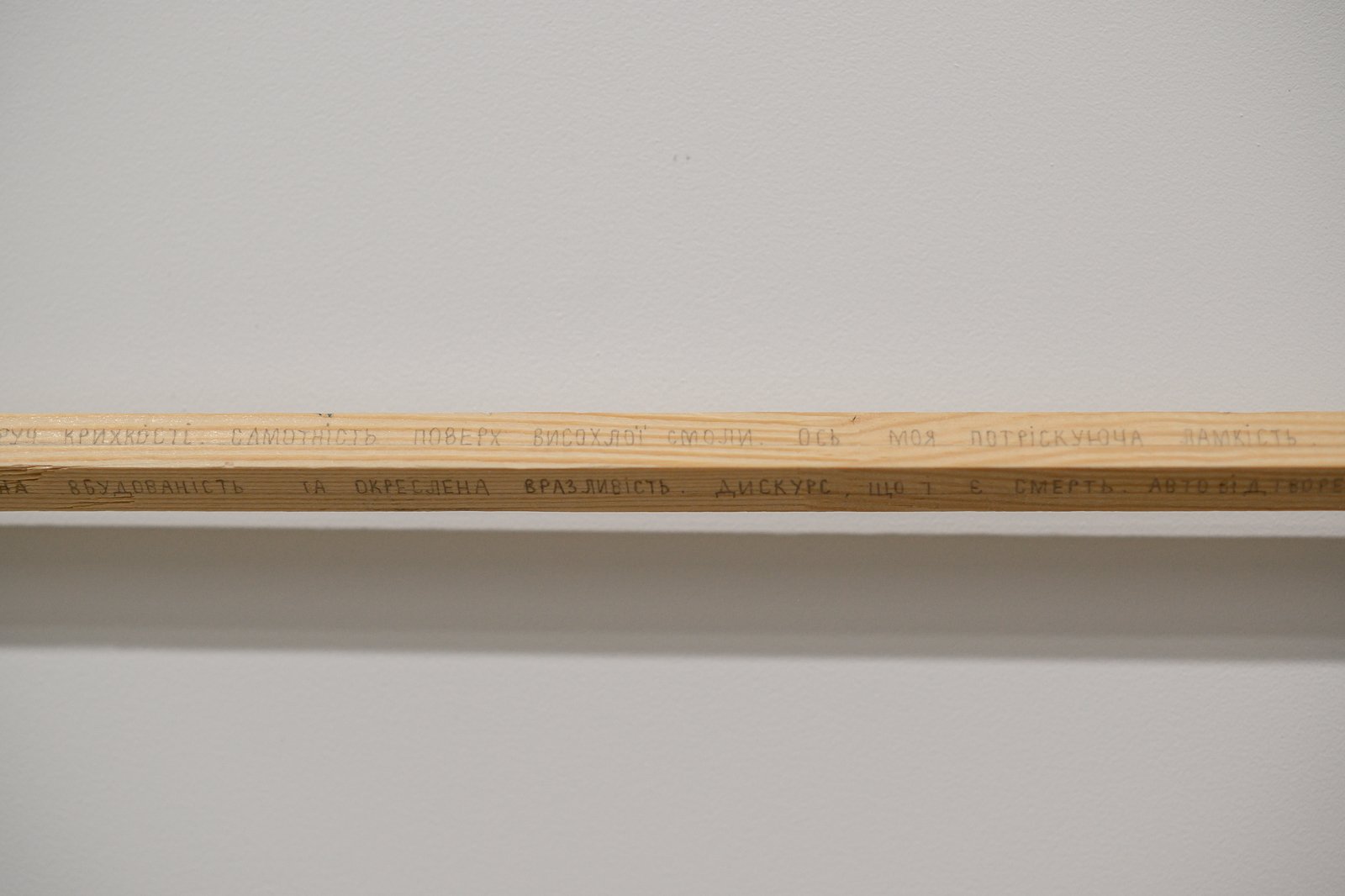
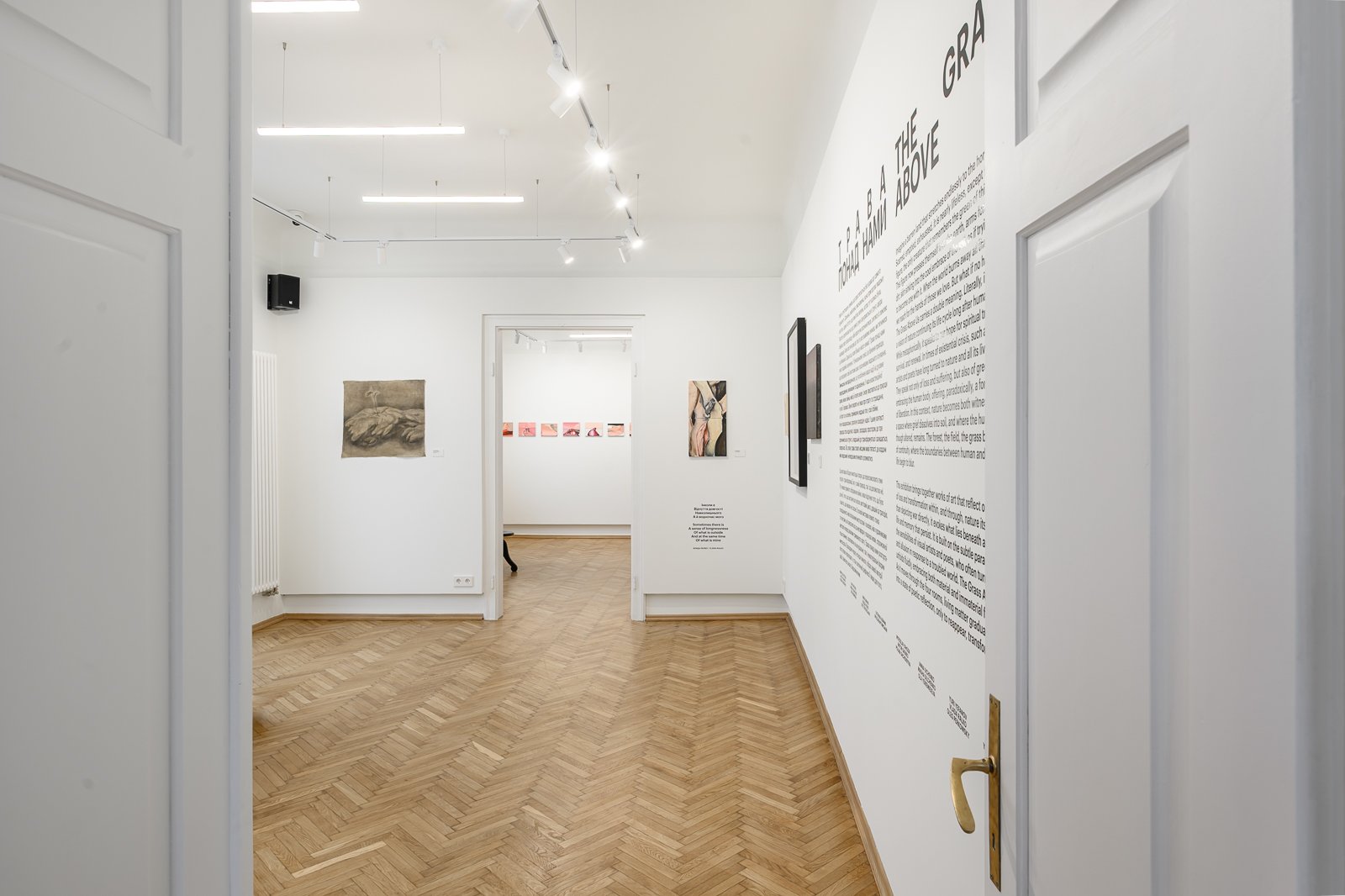
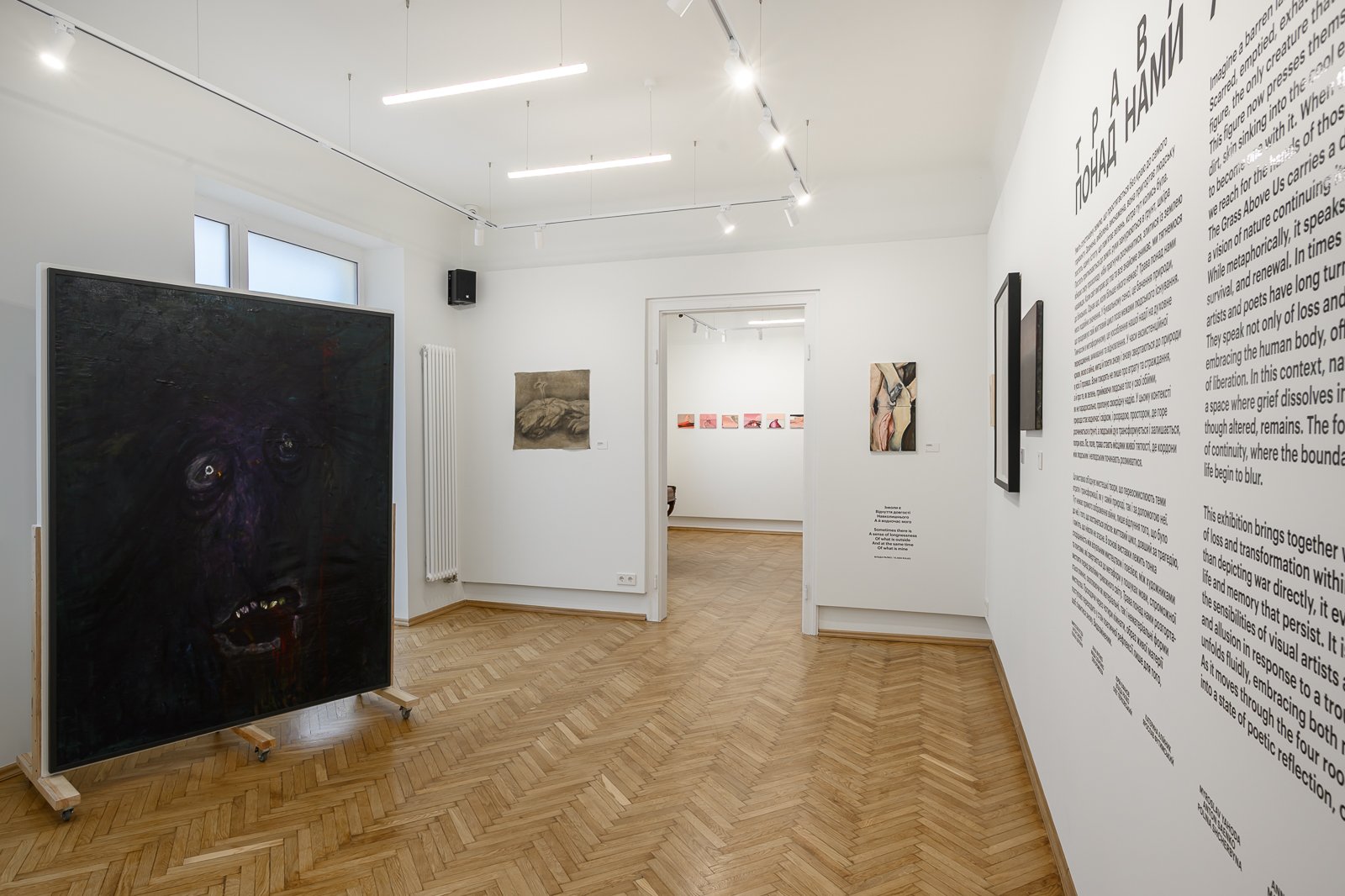
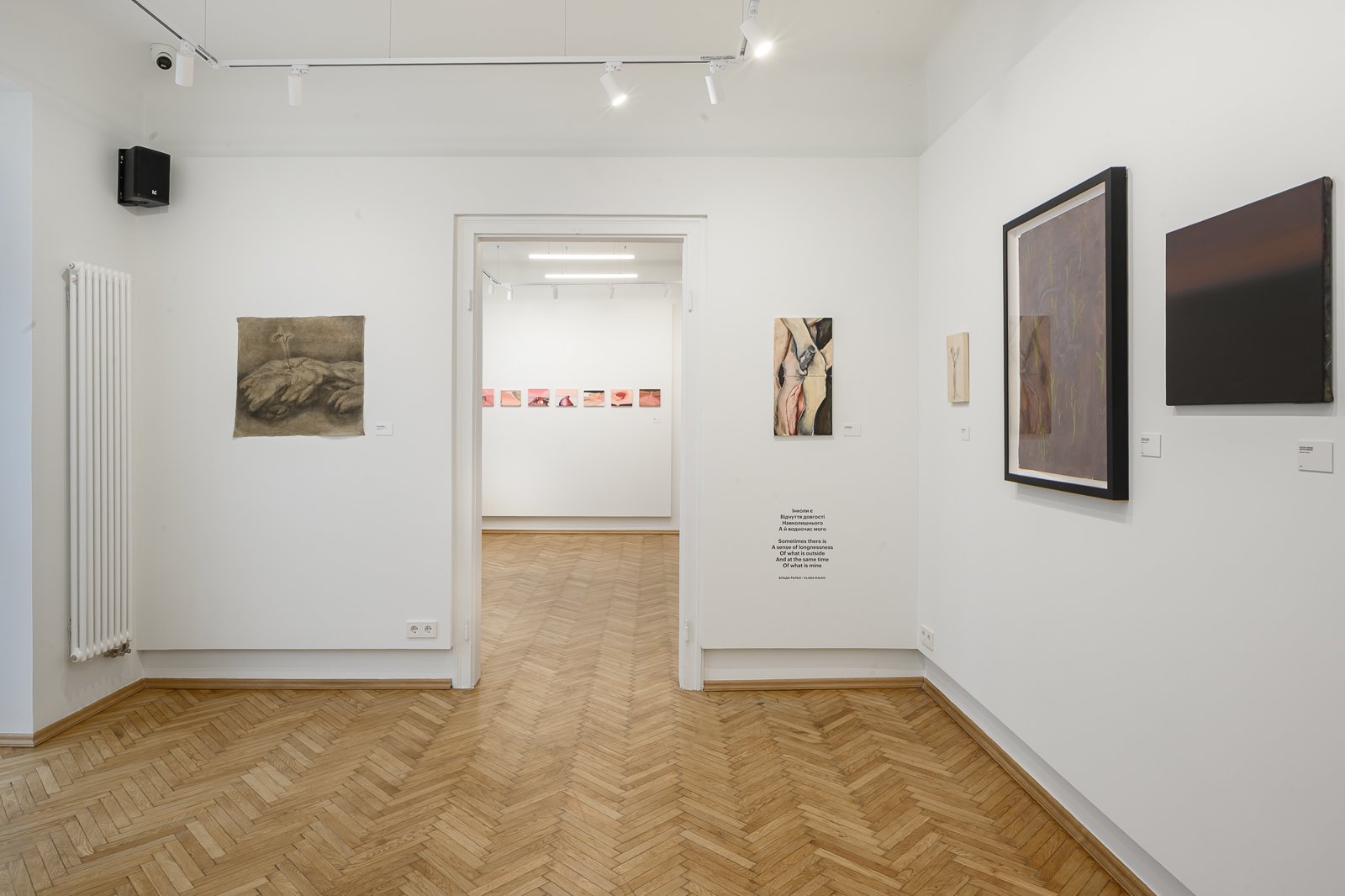
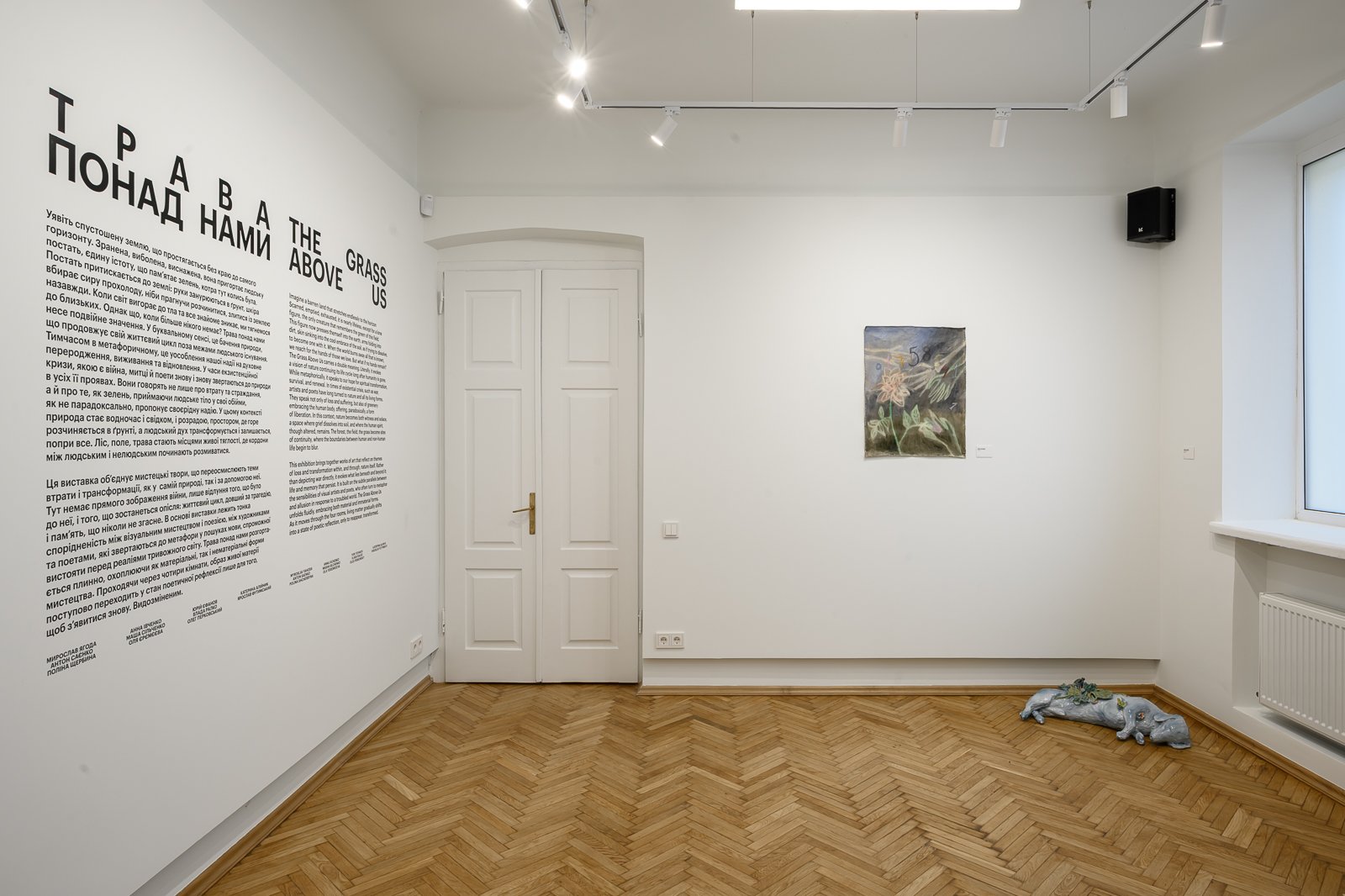
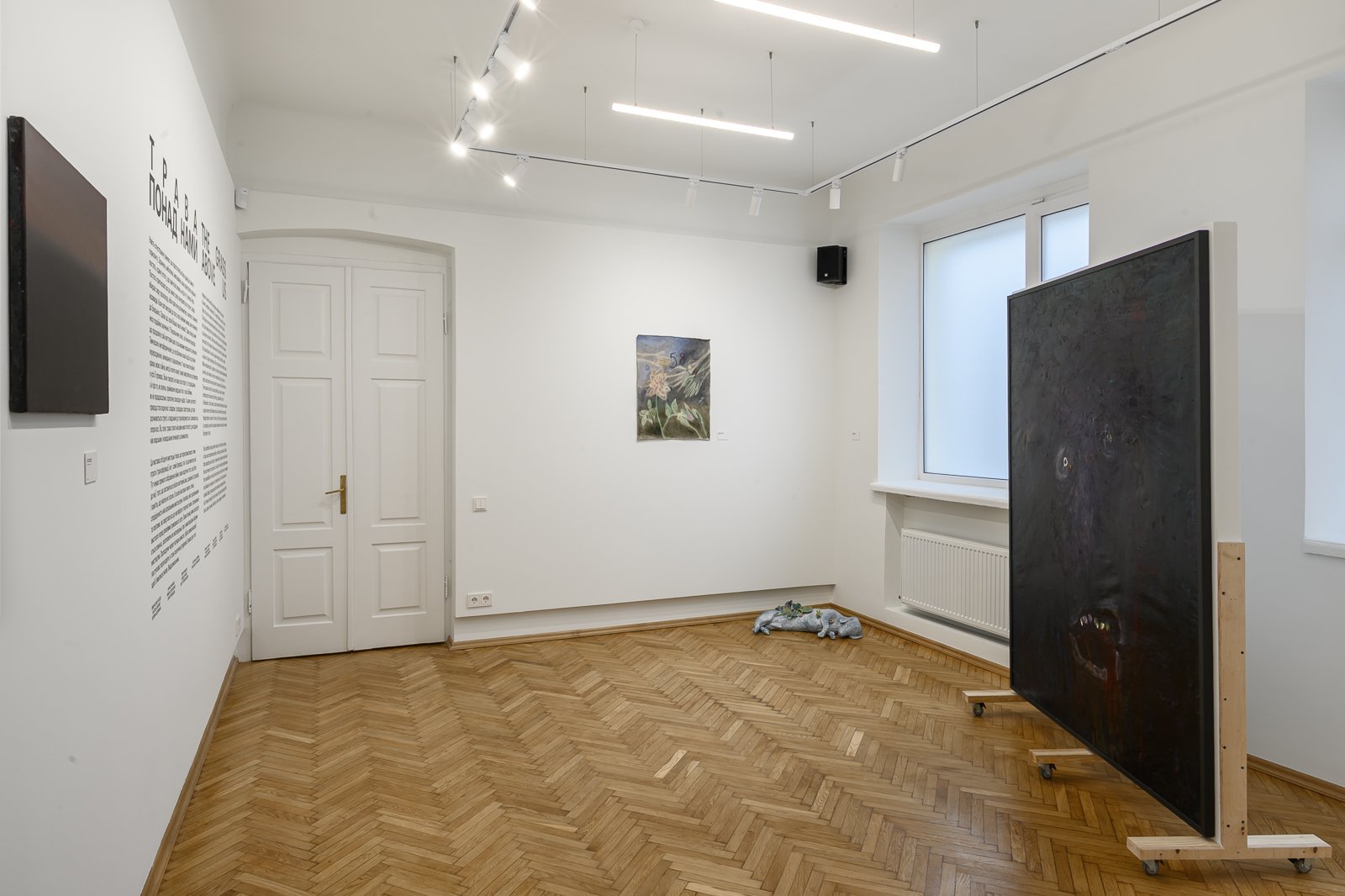
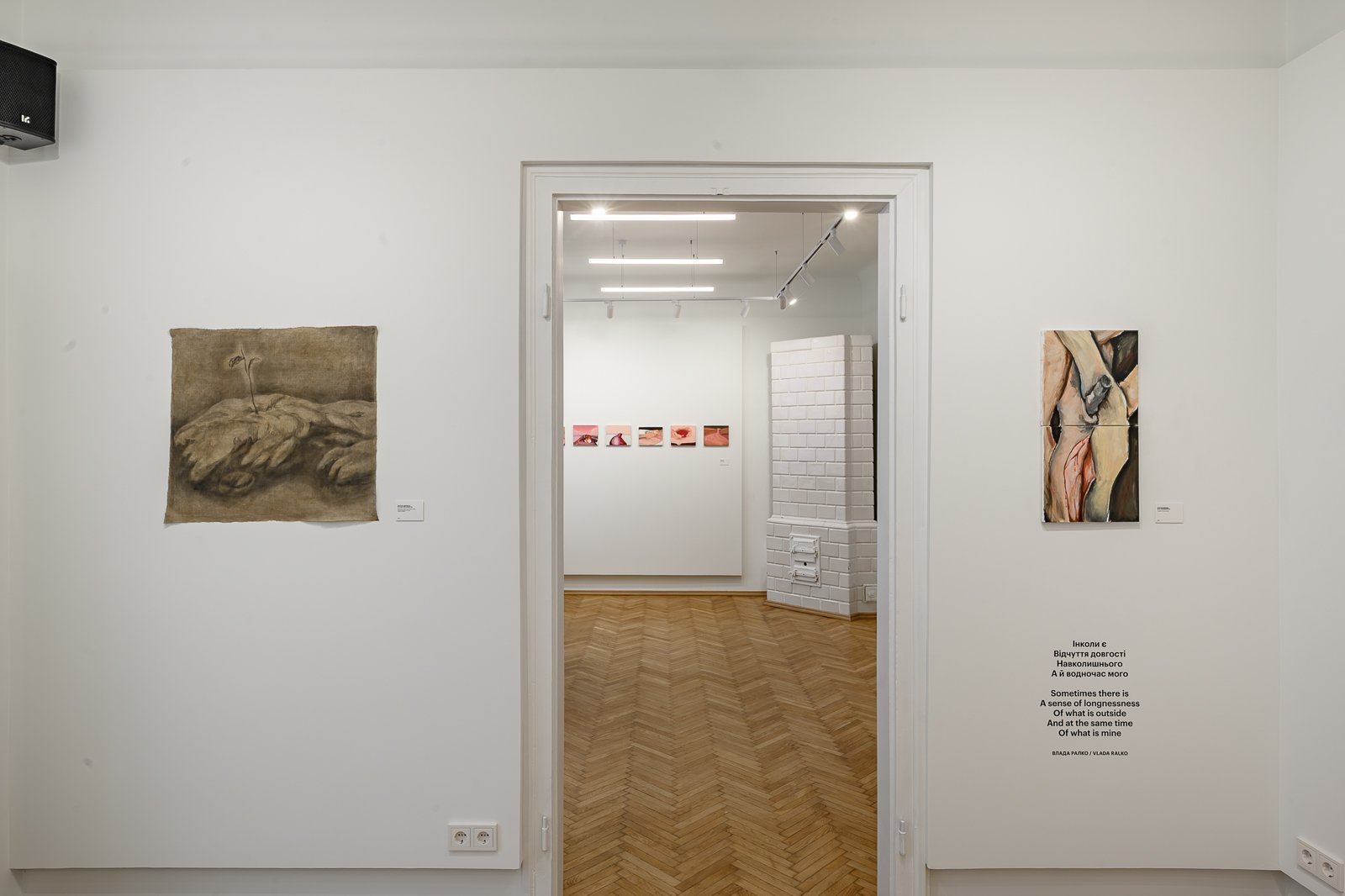
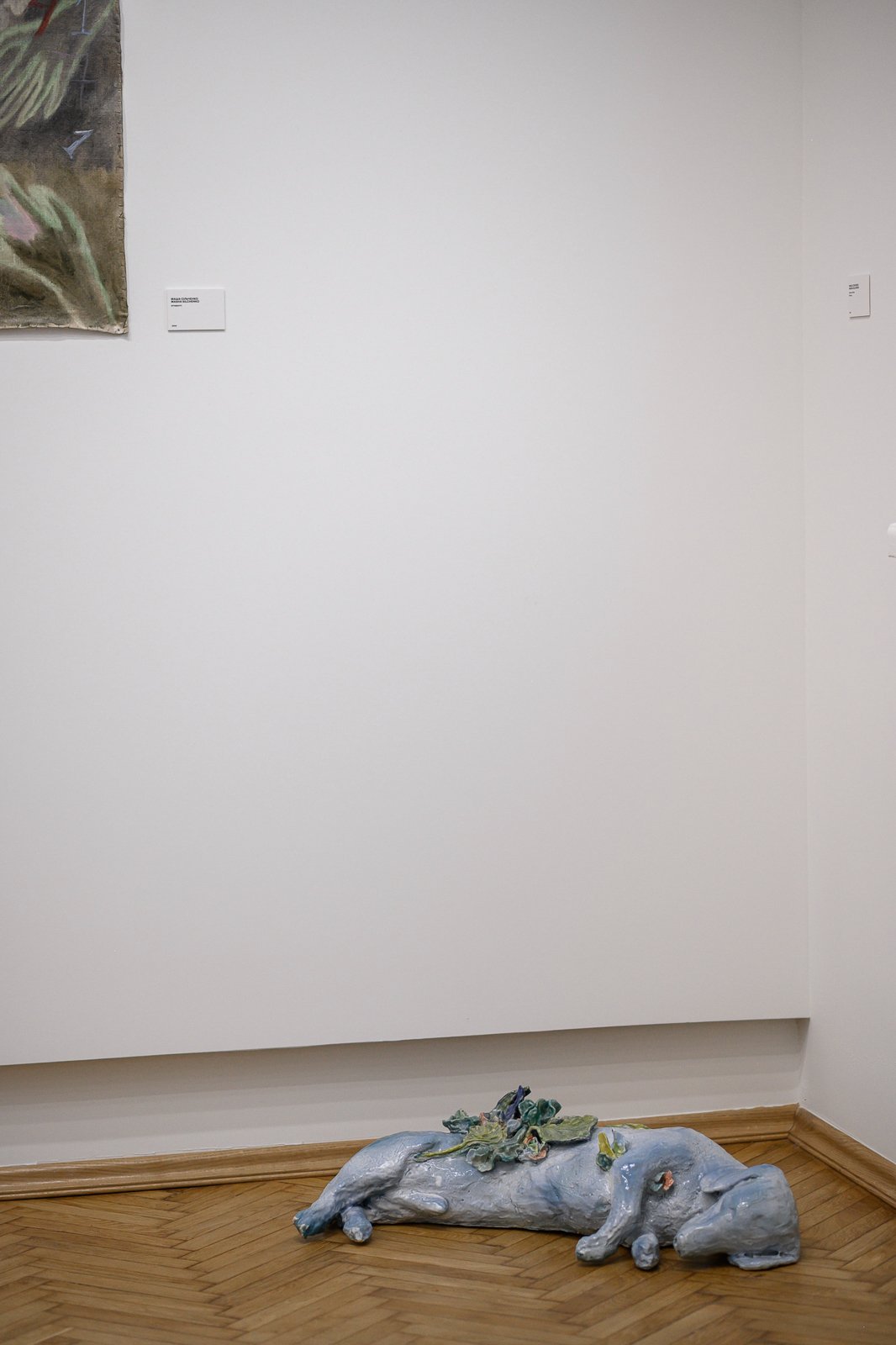
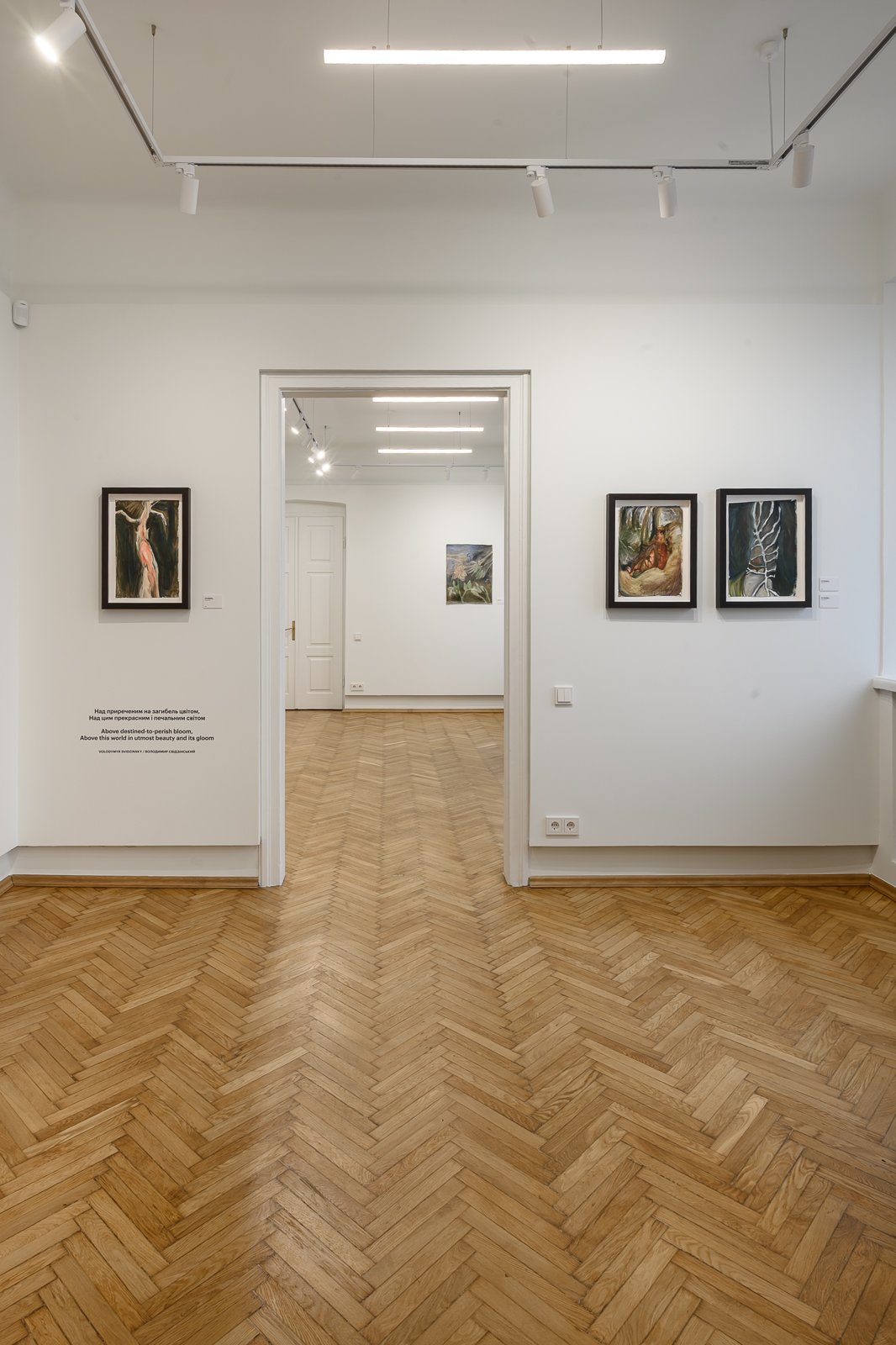
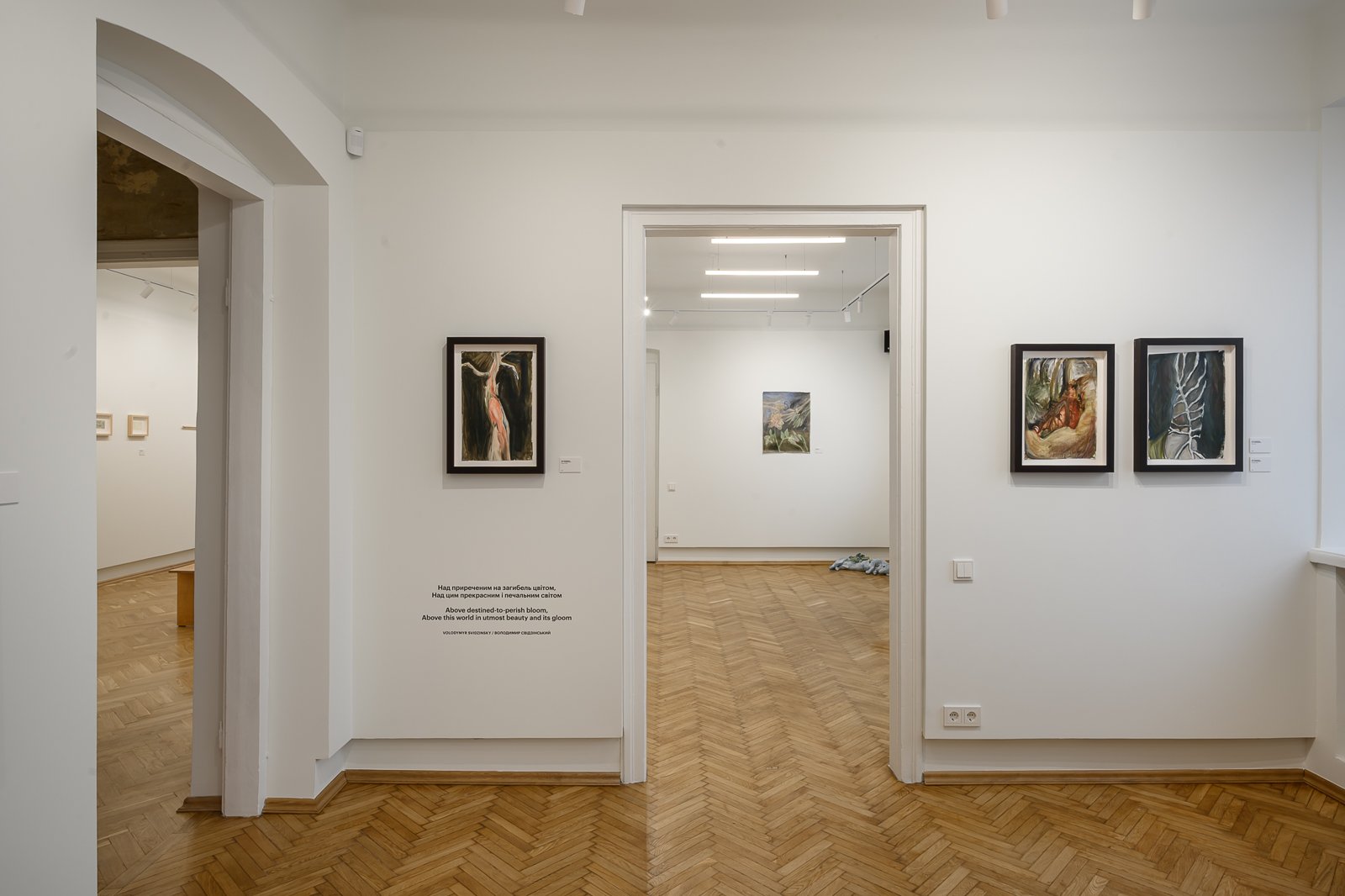
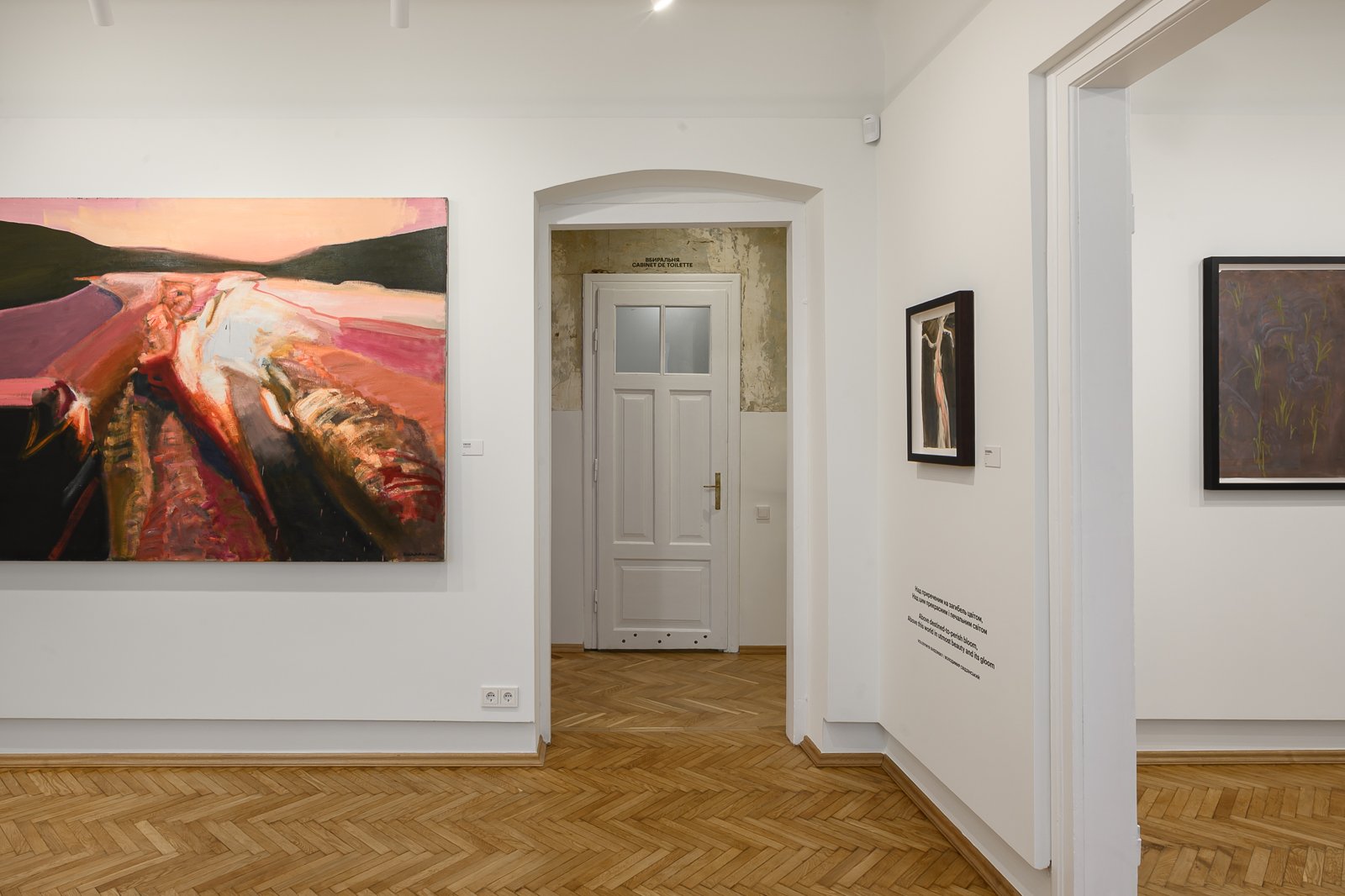
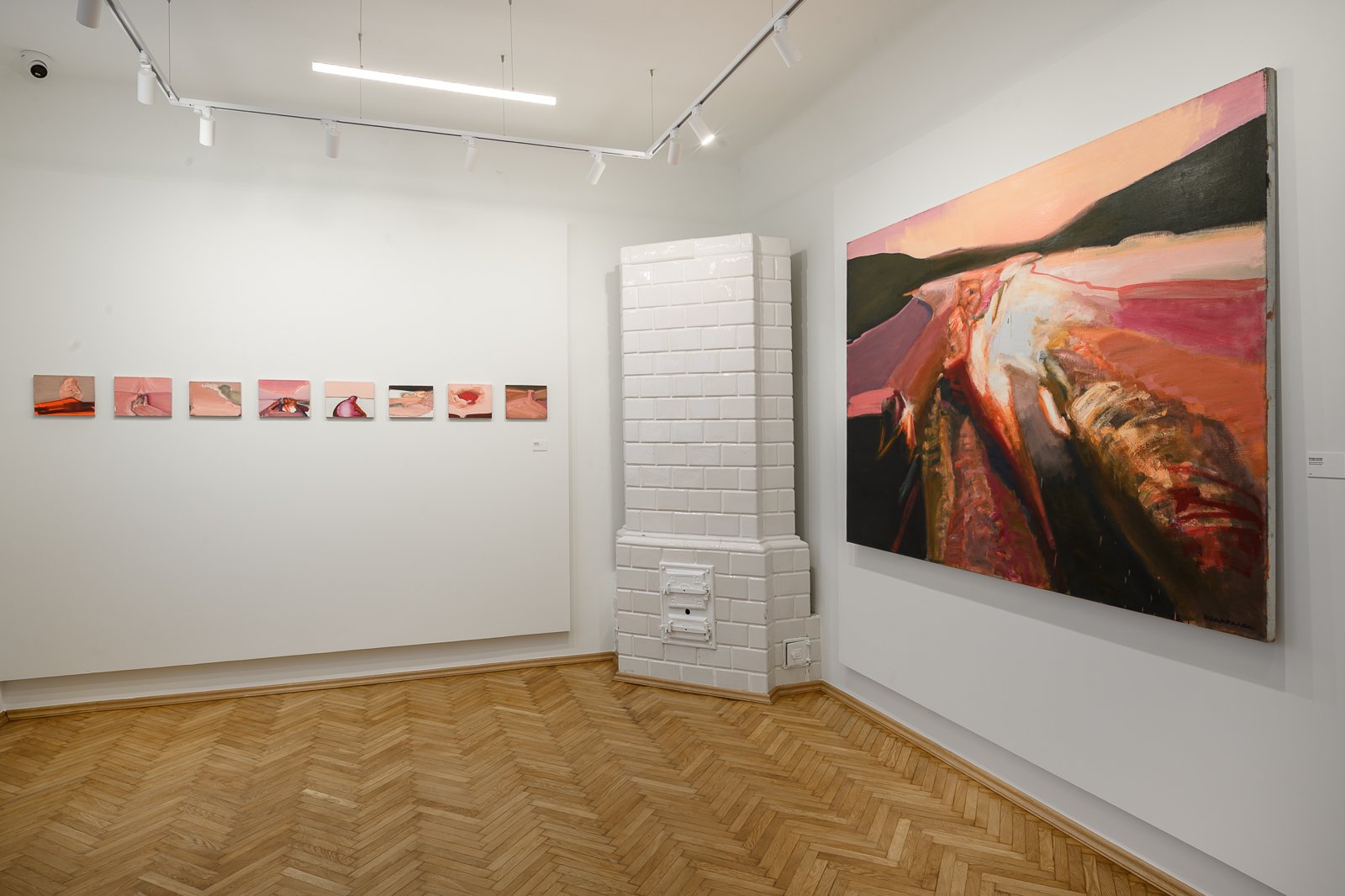
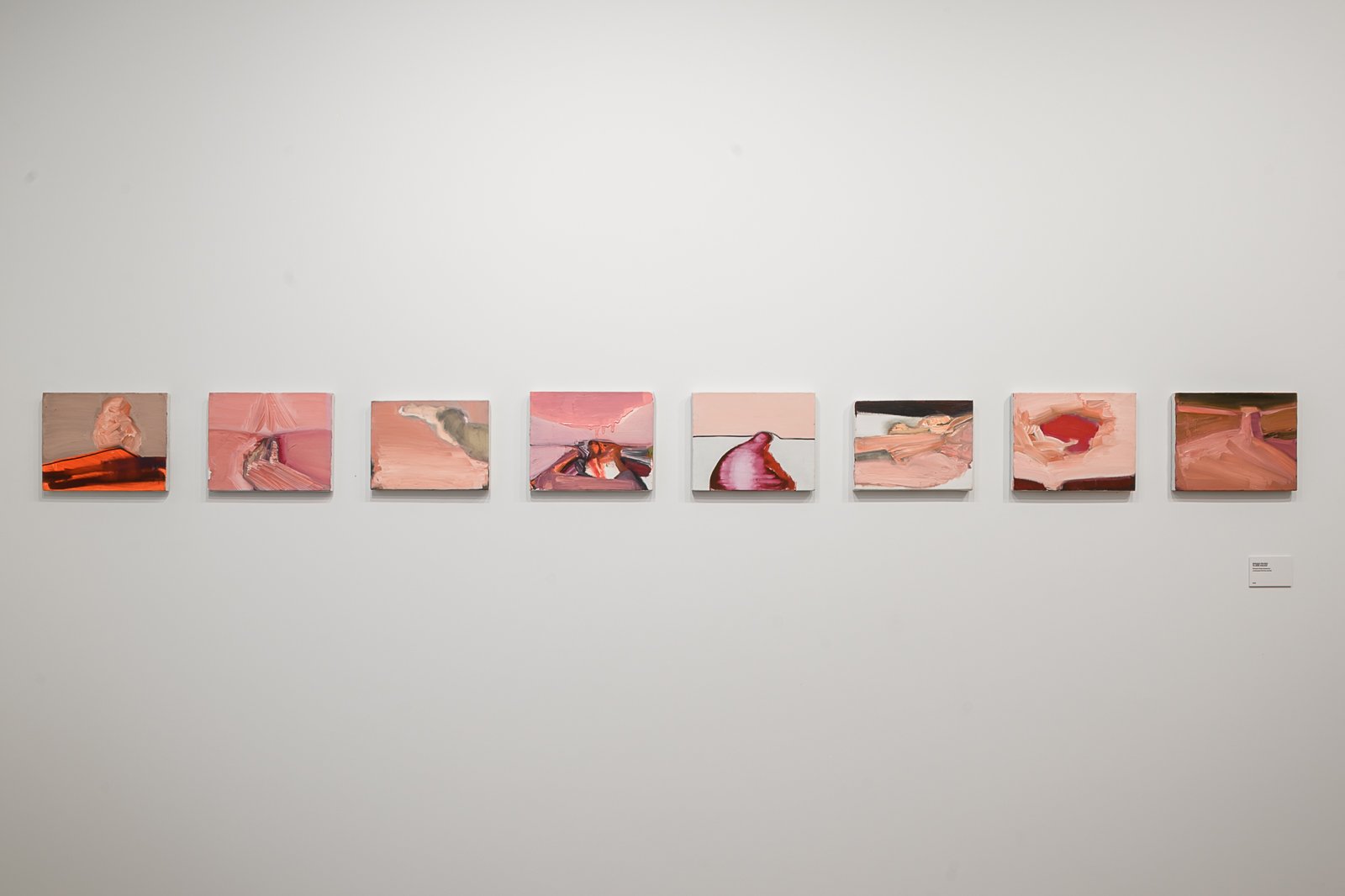
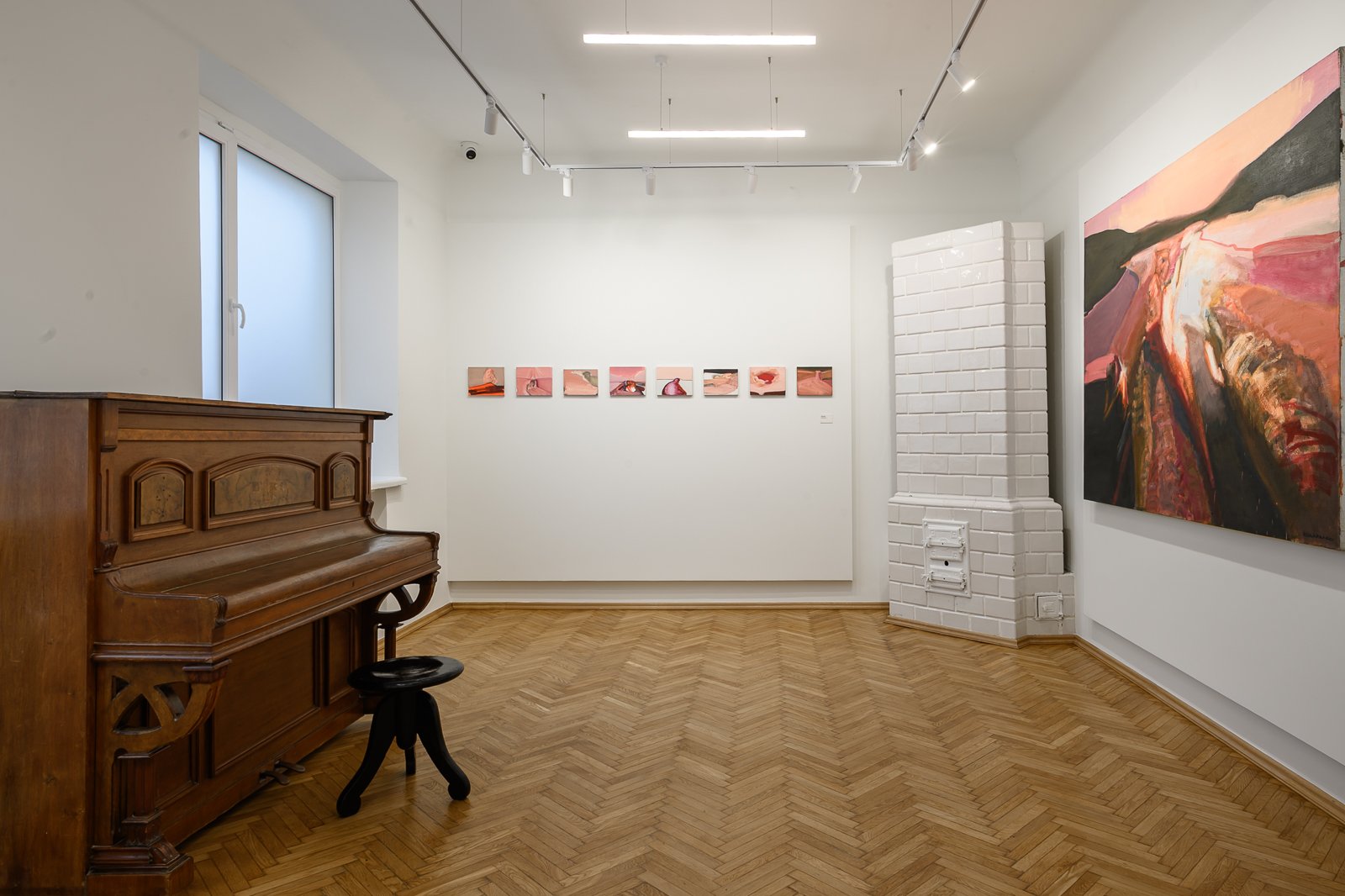
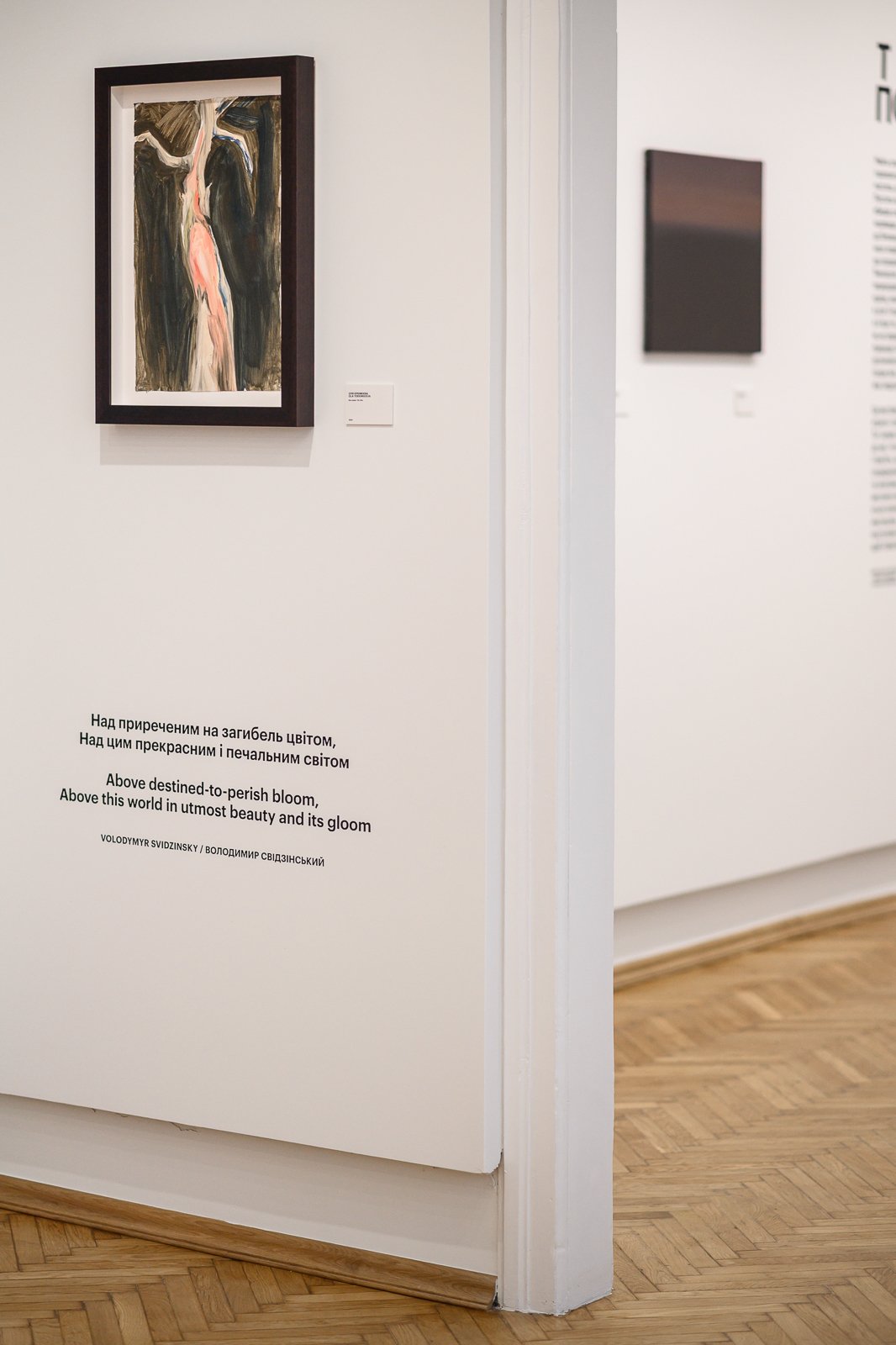
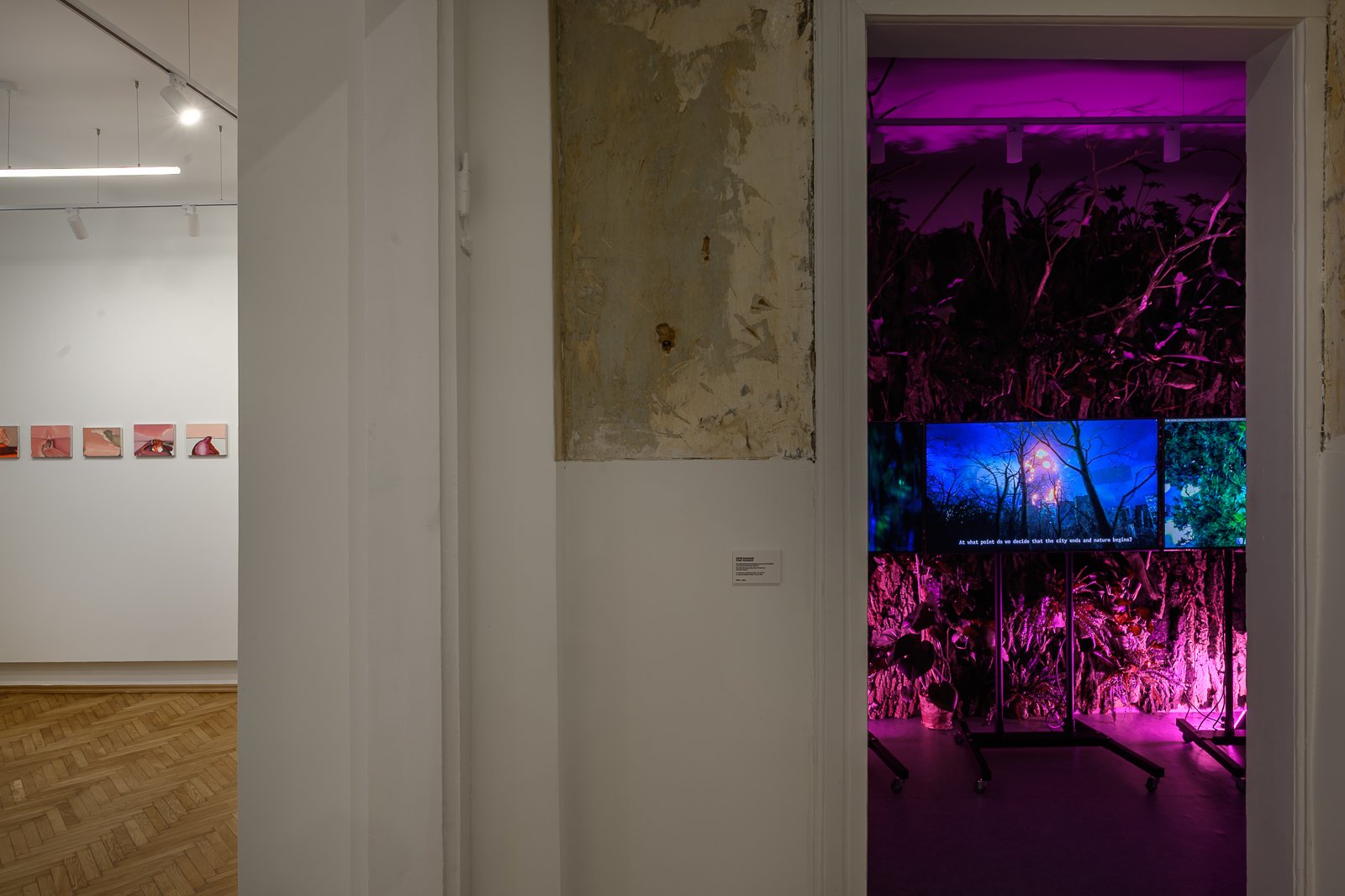
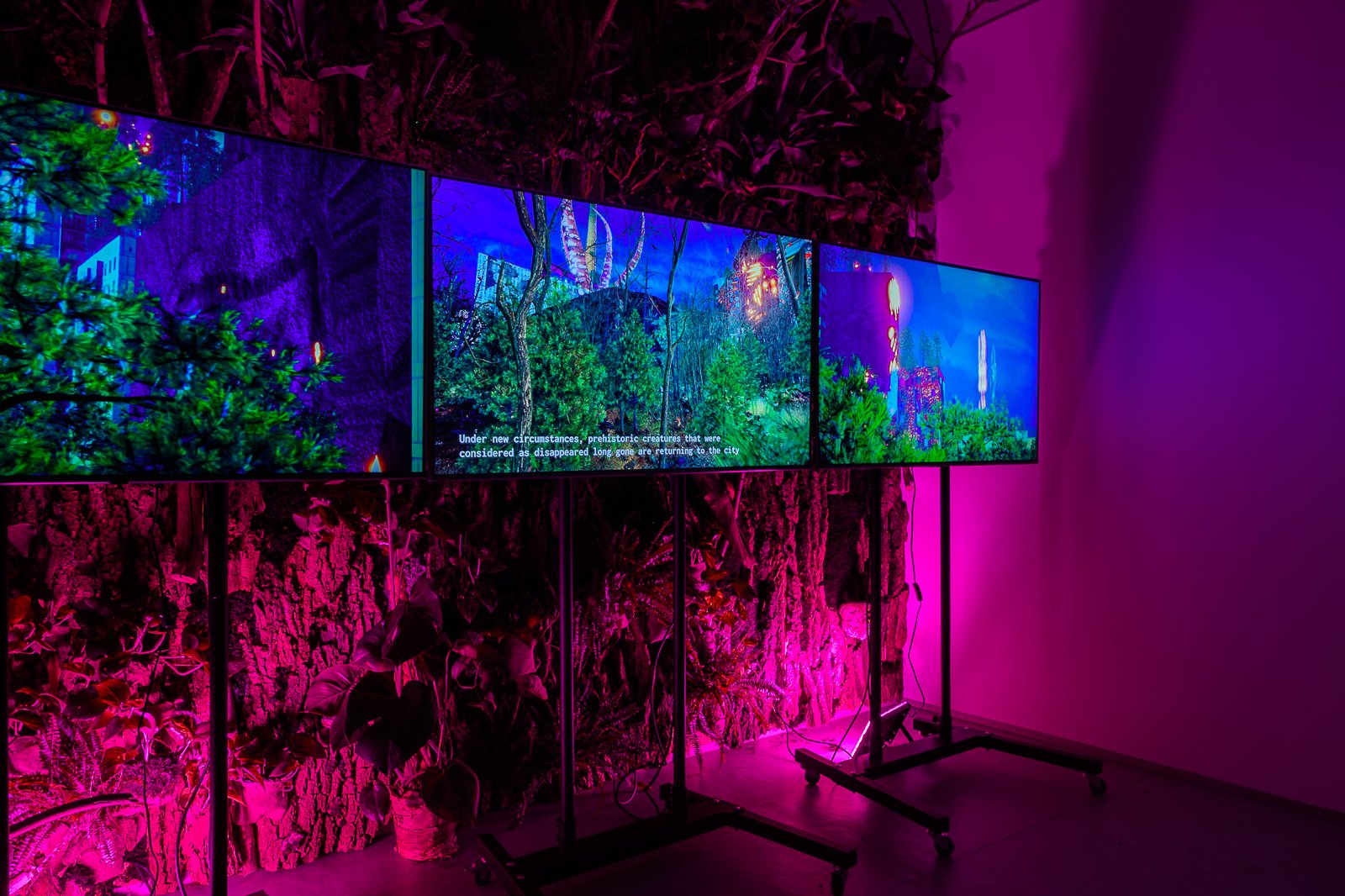
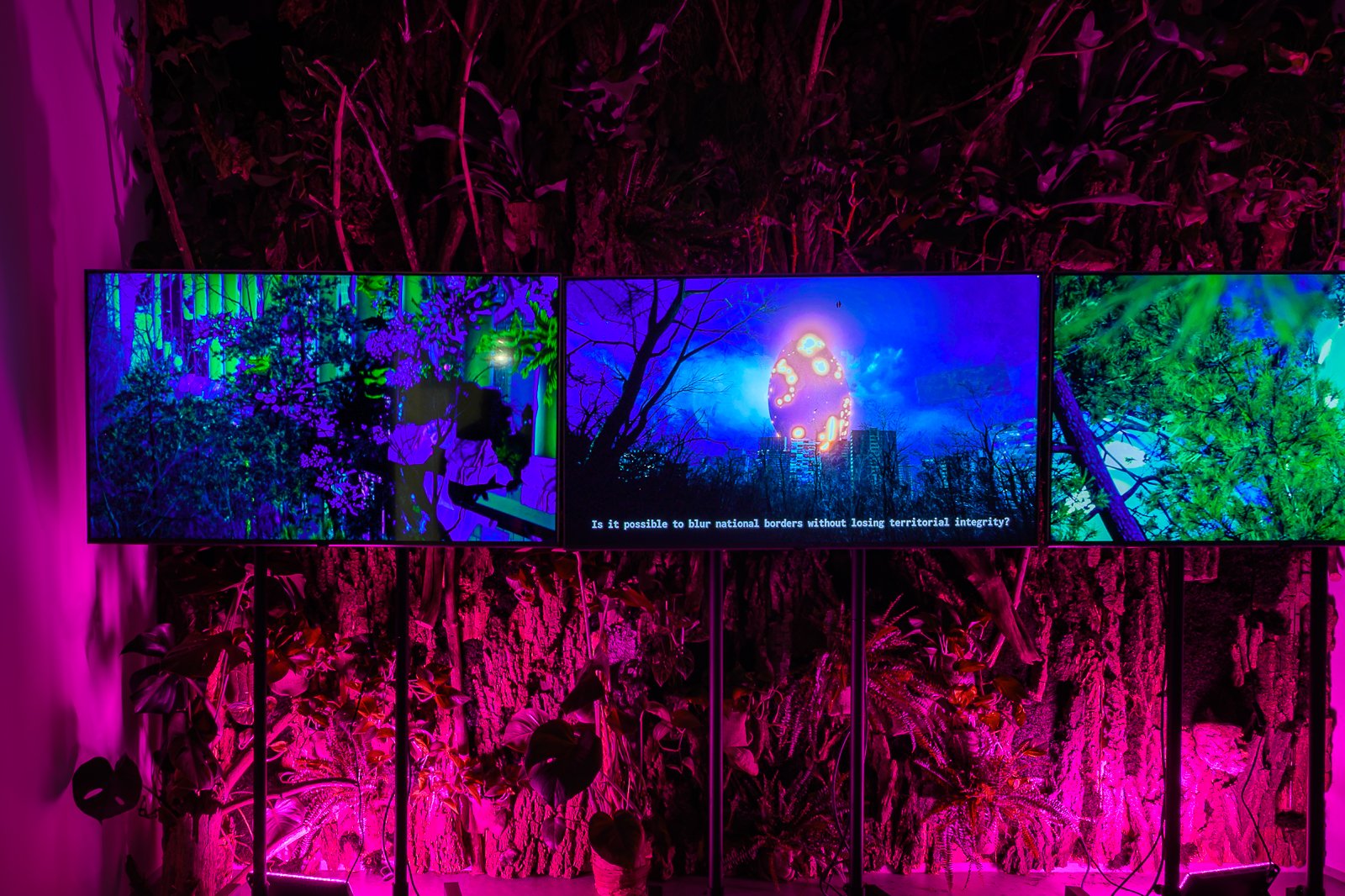
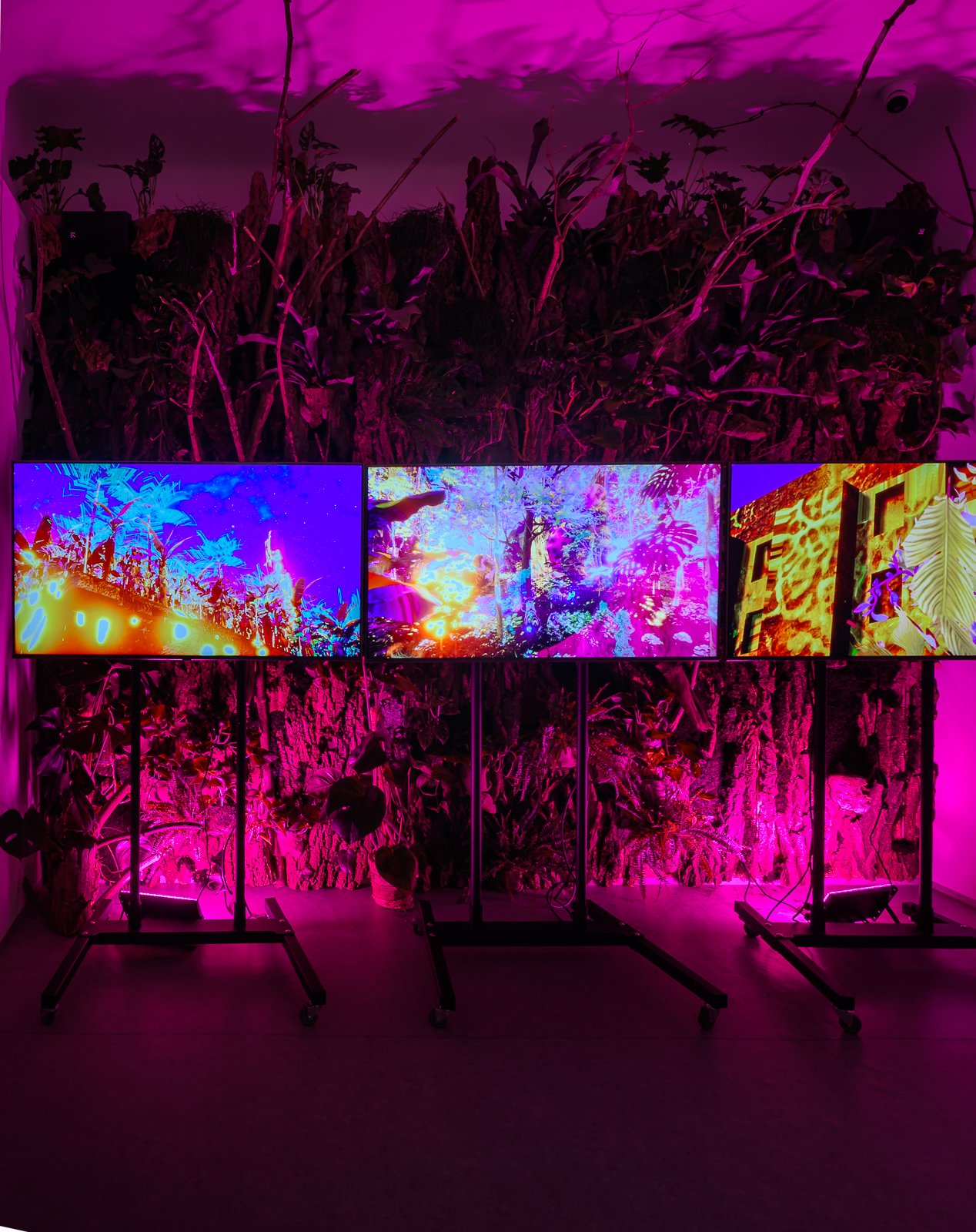
After the start of the full-scale invasion in 2022, many artists began to show increased attention to the connection between human and non-human life. This turn is not purely aesthetic but carries a conceptual and philosophical dimension, reflecting a broader rethinking of the human position within the natural world. The concept of the exhibition The Grass Above Us is based on this observation. The exhibition asks: why do artists and poets so often return to nature during moments of existential rupture? And how can this tendency be understood in light of contemporary ecological thought? Drawing on frameworks such as dark ecology (Timothy Morton), sympoiesis (Donna Haraway), and the notion of the planetary garden (Gilles Clément), The Grass Above Us interprets this aesthetic movement as part of a deeper epistemological shift from anthropocentrism toward a model of interdependence.
The title, The Grass Above Us, encapsulates the exhibition’s double reading: one literal, evoking ecological continuity beyond human life, and another metaphorical, speaking to transformation through grief, humility, and coexistence. This ambiguity is intentional: “We aim to offer multiple perspectives rather than impose a single interpretation, leaving space for personal reflection by the viewer. While we strive to move beyond nihilistic despair, we are not seeking a way to avoid tragedy. On the contrary, we hope to encourage viewers to ‘stay with the trouble,’ to engage with difficult emotions, to try to cope with them, and to find new meanings while rejecting oblivion.”– Kristina Borhes, curator of the exhibition.
The Grass Above Us brings together the works of eleven artists from different generations, created using various techniques and media: painting, graphic art, ceramics, sound art, 3D animation, textile works, and more. Through more than thirty pieces, the exhibition explores themes of loss, destruction, and regeneration, both within nature itself and through the merging of humans with it. This selection creates a cohesive environment where individual works engage in dialogue with one another, forming a multi-layered narrative. Almost all of the featured artworks are part of the private collection of the Adam Harber Foundation.
The exhibition is built on the subtle kinship between artistic and poetic language, between visual art and poetry, languages that, in times of existential crisis, repeatedly turn to nature as a space that allows the unspeakable to be spoken. Many of the artists featured in this exhibition work with poetry or incorporate it into their artistic practice. Lines of poetry, including some written by the participating artists themselves, are woven into the exhibition, enhancing its thematic structure and semantic accents. The Grass Above Us unfolds as a fluid, multi-level narrative that embraces both material and immaterial forms of art. A special place in the exhibition is given to works that exist on the threshold between the visible and the invisible: sound art that invisibly fills the space, like thoughts that return to us again and again, refusing to be forgotten; an animated film offering a speculative vision of a forest-city after the apocalypse; painting series that propose to view the landscape as a body, or to shift scale and perspective to see the world through the eyes of insects. As viewers move through the four thematic rooms, the exhibition gradually shifts their focus from the bodily and literal merging of human and nature to a space of poetic reflection, ultimately imagining a world after catastrophe, through a rethinking of humanity’s place in nature and new principles of coexistence.
